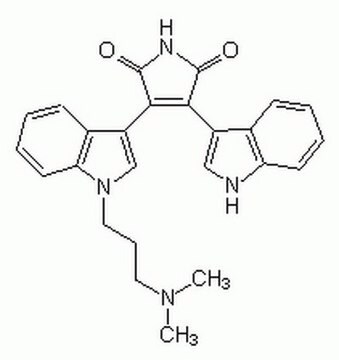추천 제품
Grade
ACS reagent
분석
≥99%
99.0-103.0% (ACS specification)
양식
solid
반응 적합성
reagent type: catalyst
core: lead
mp
75 °C (dec.) (lit.)
음이온 미량물
NO3- and NO2-: ≤0.005%
chloride (Cl-): ≤5 ppm
양이온 미량물
Ca: ≤0.005%
Cu: ≤0.002%
Fe: ≤0.001%
K: ≤0.005%
Na: ≤0.01%
SMILES string
O.O.O.CC(=O)O[PbH2]OC(C)=O
InChI
1S/2C2H4O2.3H2O.Pb/c2*1-2(3)4;;;;/h2*1H3,(H,3,4);3*1H2;/q;;;;;+2/p-2
InChI key
MCEUZMYFCCOOQO-UHFFFAOYSA-L
유사한 제품을 찾으십니까? 방문 제품 비교 안내
애플리케이션
Lead(II) acetate trihydrate can be used as a reagent to synthesize lead-based coordination polymers by using isomeric phenylenediacetic acids. It can also be used as a precursor to synthesize lead sulfide nanoparticles.
신호어
Danger
유해 및 위험 성명서
Hazard Classifications
Aquatic Acute 1 - Aquatic Chronic 1 - Carc. 2 - Eye Dam. 1 - Lact. - Repr. 1A - STOT RE 1
표적 기관
Central nervous system,Blood,Immune system,Kidney
Storage Class Code
6.1C - Combustible acute toxic Cat.3 / toxic compounds or compounds which causing chronic effects
WGK
WGK 3
Flash Point (°F)
Not applicable
Flash Point (°C)
Not applicable
이미 열람한 고객
Sailakshmi Velamoor et al.
mBio, 11(4) (2020-08-14)
Enveloped viruses hijack cellular membranes in order to provide the necessary material for virion assembly. In particular, viruses that replicate and assemble inside the nucleus have developed special approaches to modify the nuclear landscape for their advantage. We used electron
Carbon-13 CP/MAS NMR and crystallographic investigations of the structure and solid-state transformations of lead (II) acetate trihydrate.
Bryant RG, et al.
Inorganic Chemistry, 23(22), 3580-3584 (1984)
Lead acetate trihydrate precursor route to synthesize novel ultrafine lead oxide from spent lead acid battery pastes.
Sun X, et al.
Journal of Power Sources, 269, 565-576 (2014)
Carbone L, et al.
Journal of Materials Chemistry, 16(40), 3952-3956 (2006)
Jane V Knichal et al.
Chemical communications (Cambridge, England), 50(92), 14436-14439 (2014-10-11)
5-Ethynyl-1,3-benzenedicarboxylic acid (H2ebdc) reacted with lead(II) acetate trihydrate yields a 1D ladder network, [Pb(ebdc)(MeOH)]2·H2O (1). Removing crystals of 1 from the mother liquor results in a facile single crystal to single crystal transition, yielding 2D [Pb(ebdc)] net (2) with a
자사의 과학자팀은 생명 과학, 재료 과학, 화학 합성, 크로마토그래피, 분석 및 기타 많은 영역을 포함한 모든 과학 분야에 경험이 있습니다..
고객지원팀으로 연락바랍니다.









